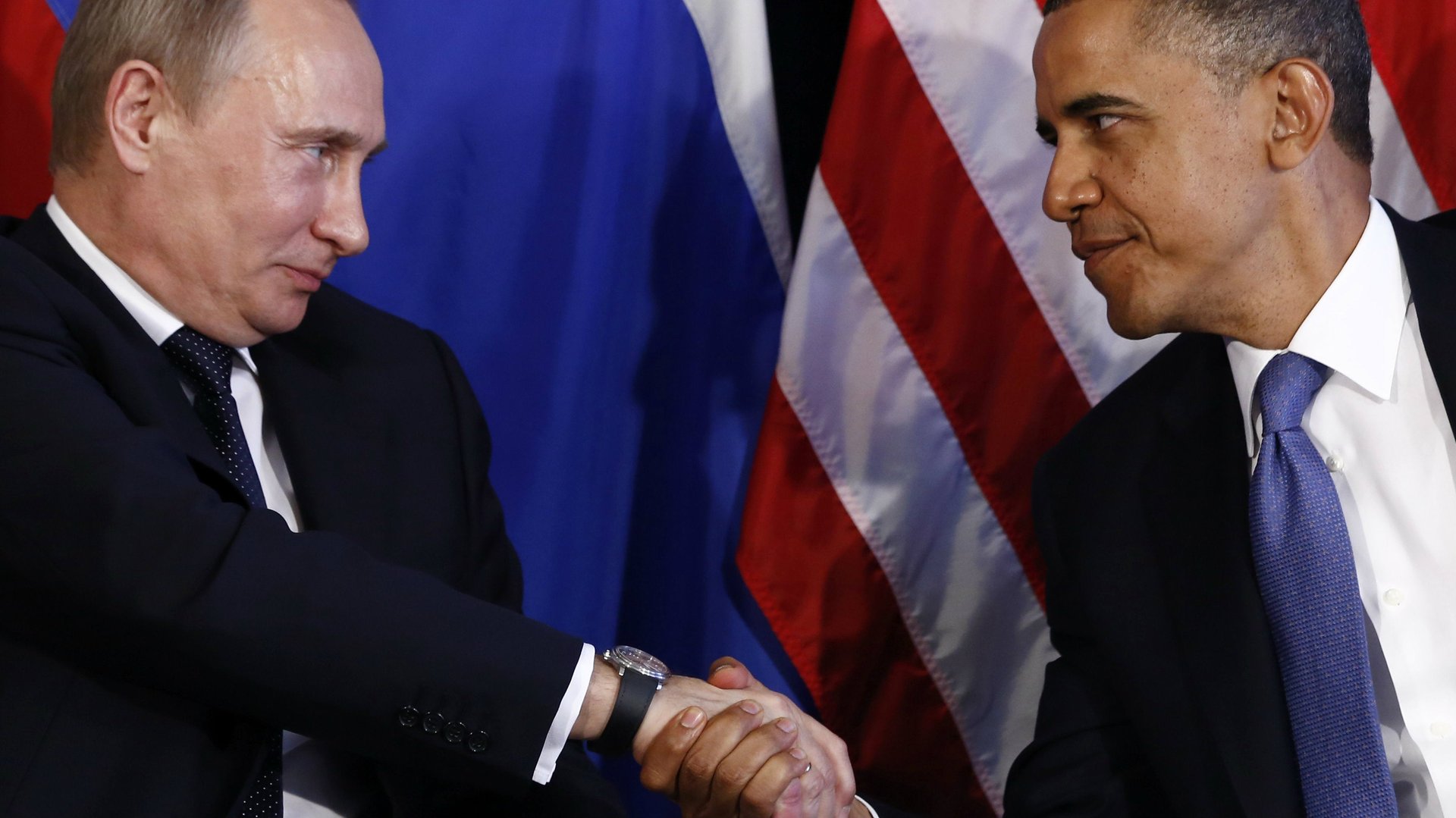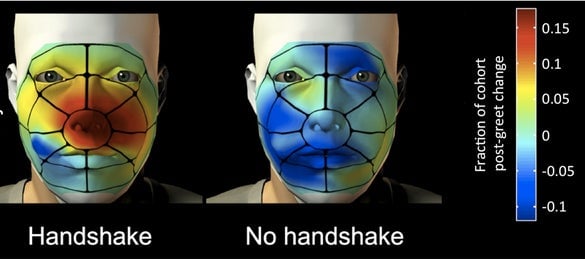You probably sniff your fingers after you shake hands, even if you think you don’t
The handshake—a universal greeting in many cultures—may also exchange chemical signals between the shakers, according to a new study. Researchers at the Weizmann Institute of Science in Rehovot, Israel found that subjects who shook hands with a stranger were twice as likely to smell their own fingers afterward, compared to those who merely said “hello.”


The handshake—a universal greeting in many cultures—may also exchange chemical signals between the shakers, according to a new study. Researchers at the Weizmann Institute of Science in Rehovot, Israel found that subjects who shook hands with a stranger were twice as likely to smell their own fingers afterward, compared to those who merely said “hello.”
Here’s video of the post-shake sniff in action, provided by the researchers and edited by New Scientist:
The research team concluded that the post-handshake sniffs enable “social chemosignaling.” In other words, it’s a way for humans to detect and analyze the subtle chemical signals that we all give off, which can subconsciously signify fear and other emotions. And no, before you ask, this wasn’t just people scratching their noses—the subjects were also hooked up to instruments that monitored air flow.

“Overt sniffing” of the hands was common among the research subjects, the study noted, but post-handshake huffing was even more frequent. Interestingly, the researchers found a noticeable difference depending on the gender of the person introduced being to the subjects.
People shaking hands with someone of the same gender were twice as likely to sniff their own right hands—the hand that just touched a stranger. But here’s a weird wrinkle: people shaking hands with someone of the opposite gender were twice as likely to sniff their left hands, which did not touch the stranger at all.
“We speculate that this reflects an ongoing comparative process whereby sniffing of the left hand subserves self-recognition and sniffing of the right hand subserves the investigation of others,” the researchers wrote.
In other words, when you meet someone of the same gender, your brain wonders: “What does this person smell like?”And when you meet someone of the opposite gender—a potential mate, if you’re heterosexual—the brain’s question is different:
“Do I smell?”